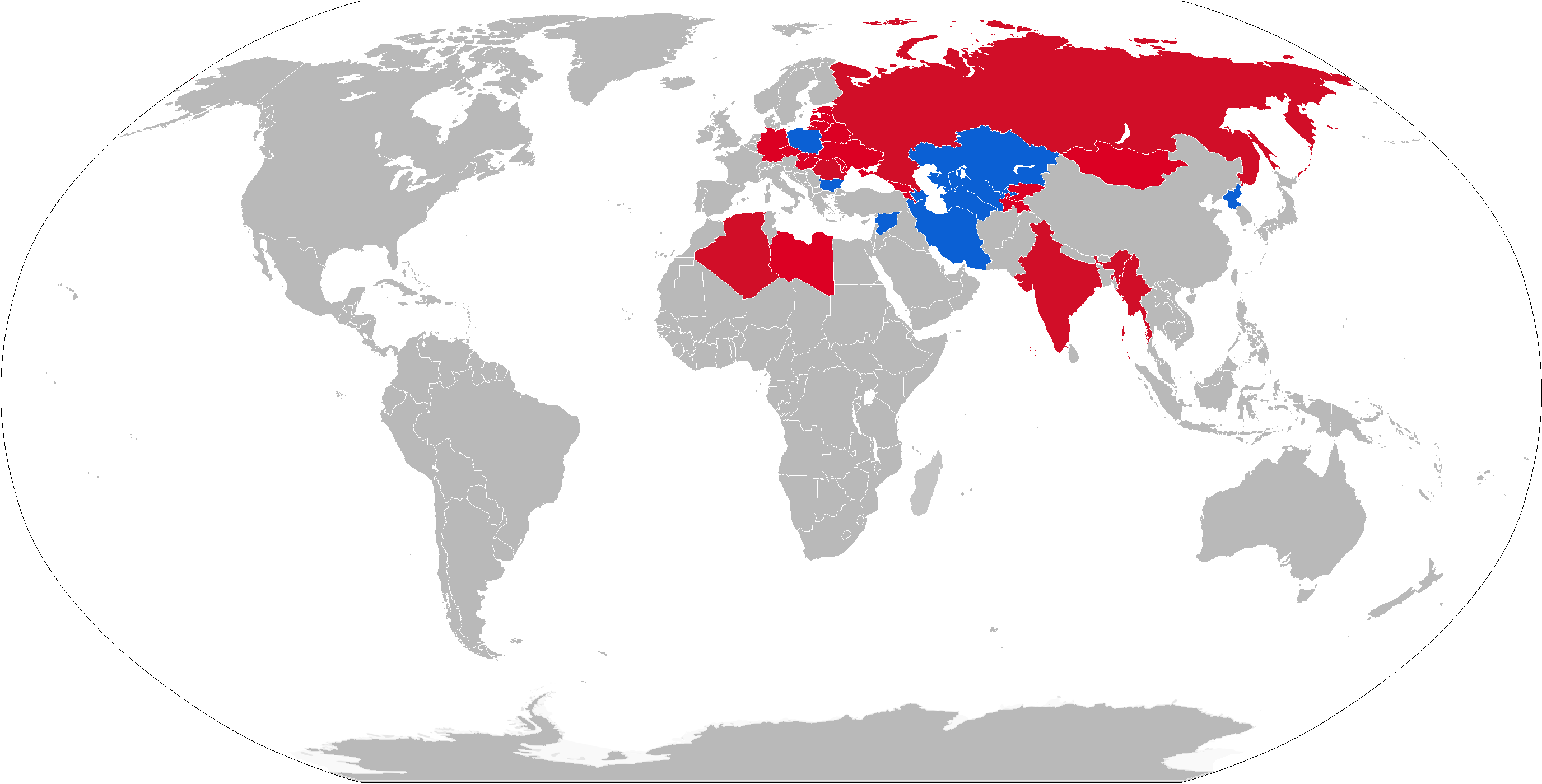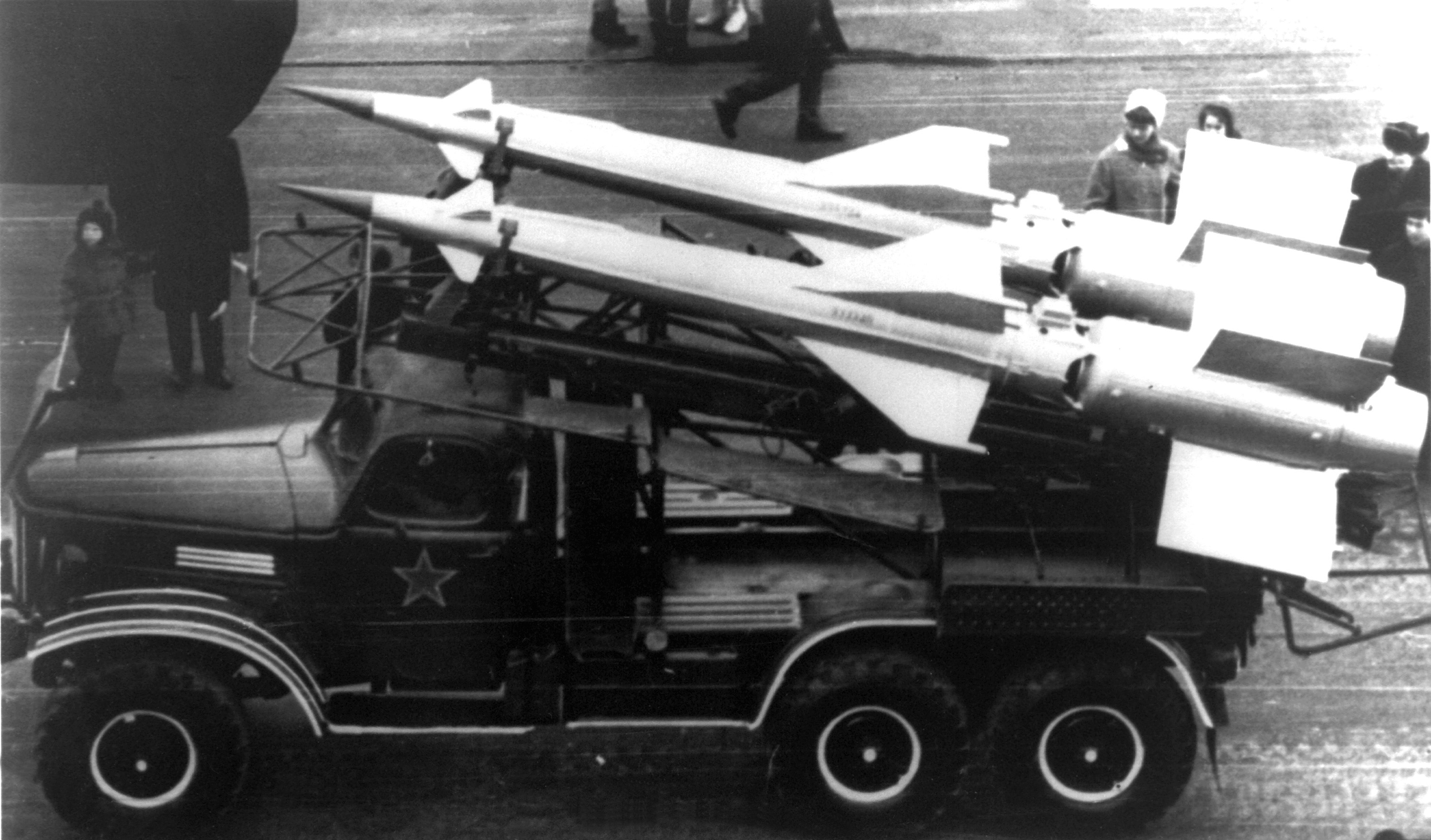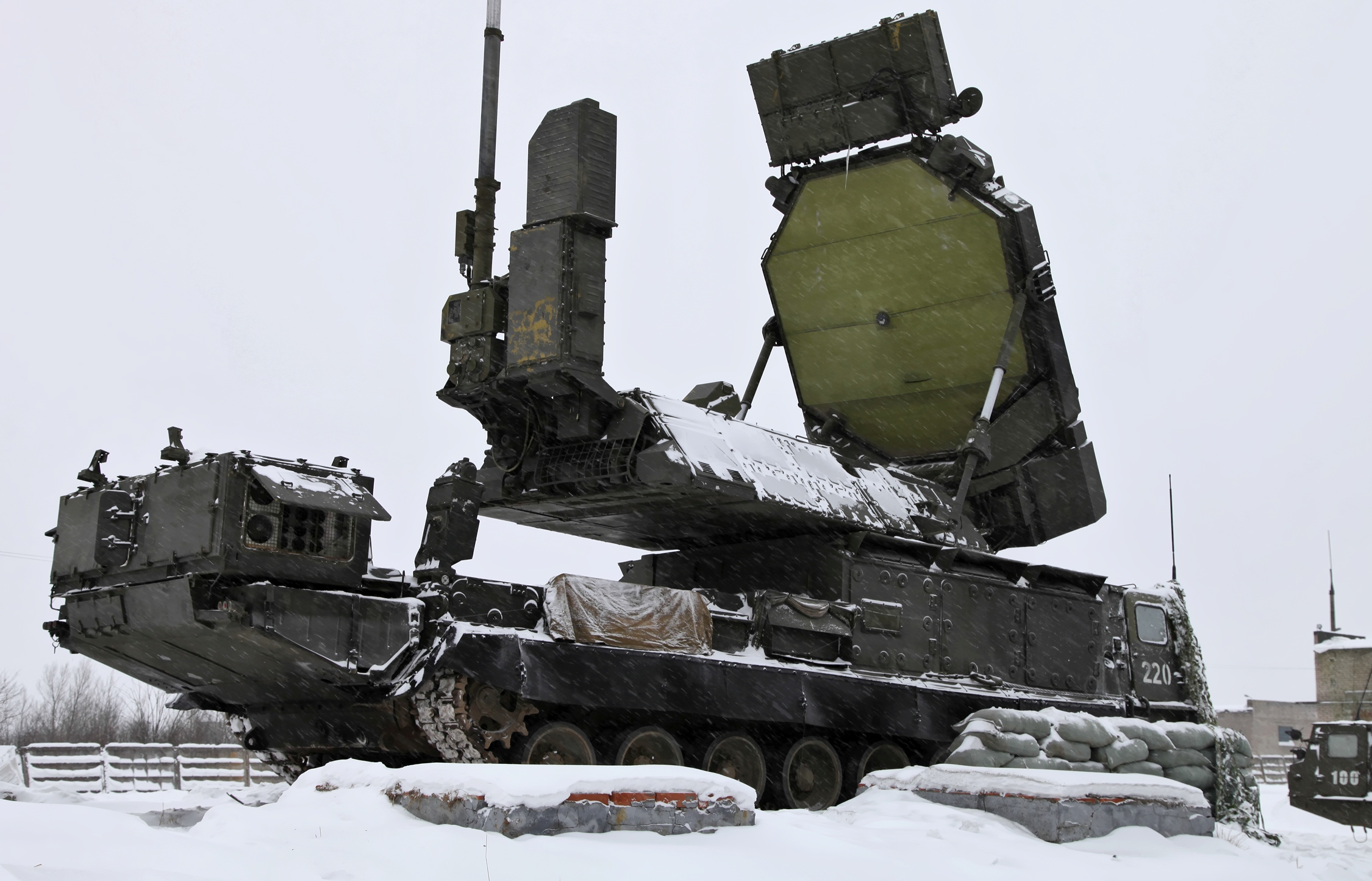|
KB-1
JSC NPO Almaz named after A.A. Raspletin (russian: link=no, ГСКБ Концерна ПВО "Алмаз-Антей", former SB-1, 1947–50; KB-1, 1950–66; MKB Strela, 1966–71; TsKB Almaz, 1971–88; NPO Almaz, 1988–2008; GSKB Almaz-Antey, 2008–15) is a Soviet/Russian military R&D enterprise founded in 1947. It is the core of the Almaz-Antey holding. Headquarters – Moscow, Leningradsky av., 80. History The company is named after its chief designer . Since 1955, KB-1 developed such air defence missile systems as the S-25 Berkut, S-75 Dvina, S-125 Neva/Pechora, S-200 Angara/Vega/Dubna, S-300, S-400 Triumf, S-300PMU, S-300PMU2, and S-350E Vityaz. On 30 November 2009, the board of directors of Almaz-Antey voted to reorganize the joint-stock companies NIEMI, NIIRP, MNIIRE Altair and MNIIPA, merging them with NPO Almaz to form GSKB joint venture. GSKB became the head R&D arm of Almaz-Antey holdings, becoming its Head System Design Bureau (russian: link=no, ГСКБ ... [...More Info...] [...Related Items...] OR: [Wikipedia] [Google] [Baidu] |
Design Bureau
OKB is a transliteration of the Russian initials of "" – , meaning 'experiment and design bureau'. During the Soviet era, OKBs were closed institutions working on design and prototyping of advanced technology, usually for military applications. The english language corresponding term for such bureau's occupation is Research and Development. A bureau was officially identified by a number, and often semi-officially by the name of its lead designer – for example, OKB-51 was led by Pavel Sukhoi, and it eventually became known as the OKB of Sukhoi. Successful and famous bureaus often retained this name even after the death or replacement of their designers. These relatively small, state-run organisations were not intended for the mass production of aircraft, rockets, or other vehicles or equipment which they designed. However, they usually had the facilities and resources to construct prototypes. Designs accepted by the state were then assigned to factories for mass production. A ... [...More Info...] [...Related Items...] OR: [Wikipedia] [Google] [Baidu] |
S-25 Berkut
The S-25 ''Berkut'' (russian: С-25 «Беркут»; "Berkut" means golden eagle in English) is a surface-to-air guided missile, the first operational SAM system in the Soviet Union. In the early 1950s it was tested at Kapustin Yar. It was deployed in several rings around Moscow starting in 1955 and became combat ready in June 1956. It was used only defensively at Moscow; the more mobile S-75 (SA-2 Guideline) would be used in almost all other locations. Several improvements were introduced over its long service lifetime, and the system was finally replaced by the S-300P in 1982. Its NATO reporting name is SA-1 ''Guild''. S-25 is short for ''Systema 25'', referring to the entire system of missiles, radars, and launchers. Portions of the system include the V-300 missile, R-113 and B-200 radars, and A-11/A-12 antennas for the B-200. History Development of the S-25 was authorized on 9 August 1950 by a decision of USSR and was appended by Stalin: (''We have to get the missile for a ... [...More Info...] [...Related Items...] OR: [Wikipedia] [Google] [Baidu] |
S-75 Dvina
The S-75 (Russian: С-75; NATO reporting name SA-2 Guideline) is a Soviet-designed, high-altitude air defence system, built around a surface-to-air missile with command guidance. Following its first deployment in 1957 it became one of the most widely deployed air defence systems in history. It scored the first destruction of an enemy aircraft by a surface-to-air missile, with the shooting down of a Taiwanese Martin RB-57D Canberra over China on 7 October 1959 that was hit by a salvo of three V-750 (1D) missiles at an altitude of 20 km (65,600 ft). This success was credited to Chinese fighter aircraft at the time to keep the S-75 program secret. This system first gained international fame when an S-75 battery, using the newer, longer-range, higher-altitude V-750VN (13D) missile was deployed in the 1960 U-2 incident, when it shot down the Lockheed U-2, U-2 of Francis Gary Powers overflying the Soviet Union on May 1, 1960. The system was also deployed in Cuba during the C ... [...More Info...] [...Related Items...] OR: [Wikipedia] [Google] [Baidu] |
S-200 Angara/Vega/Dubna
The NPO Almaz S 200 ''Angara/Vega/Dubna'' (Russian language, Russian С-200 Ангара/Вега/Дубна), NATO reporting name SA-5 ''wiktionary:gammon, Gammon'' (initially ''Tallinn''), is a long range, high altitude surface-to-air missile (SAM) system developed by the Soviet Union in the 1960s to defend large areas from high-altitude bombers or other targets. In Soviet service, these systems were deployed primarily on the battalion level, with six launchers and a fire control radar. The S-200 can be linked to other, longer-range radar systems. Description The S-200 surface-to-air missile system was designed for the defense of the most important administrative, industrial and military installations from all types of air attack. The S-200 is an all-weather system that can be operated in various climatic conditions. By 1966, the S-200 was officially accepted into service in order to replace the failed anti-ballistic missile RZ-25/5V11 "Dal". The Dal was assigned the NA ... [...More Info...] [...Related Items...] OR: [Wikipedia] [Google] [Baidu] |
S-125 Neva/Pechora
The S-125 ''Neva/Pechora'' (russian: С-125 "Нева"/"Печора", NATO reporting name SA-3 ''Goa'') is a Soviet surface-to-air missile system that was designed by Aleksei Isaev to complement the S-25 and S-75. It has a shorter effective range and lower engagement altitude than either of its predecessors and also flies slower, but due to its two-stage design it is more effective against more maneuverable targets. It is also able to engage lower flying targets than the previous systems, and being more modern it is much more resistant to ECM than the S-75. The 5V24 (V-600) missiles reach around Mach 3 to 3.5 in flight, both stages powered by solid fuel rocket motors. The S-125, like the S-75, uses radio command guidance. The naval version of this system has the NATO reporting name SA-N-1 Goa and original designation M-1 Volna (Russian Волна – ''wave''). Operational history Soviet Union The S-125 was first deployed between 1961 and 1964 around Moscow, augmenting th ... [...More Info...] [...Related Items...] OR: [Wikipedia] [Google] [Baidu] |
S-300V
The S-300 (NATO reporting name SA-10 Grumble) is a series of long range surface-to-air missile systems developed and operated by the former Soviet Union, now fielded by the militaries of Russia and Ukraine as well as several other former Eastern Bloc countries. It was produced by NPO Almaz, based on the initial S-300P version. The S-300 system was developed to defend against air raids and cruise missiles for the Soviet Air Defence Forces. Subsequent variations were also developed to be able to intercept ballistic missiles. The S-300 system was first deployed by the Soviet Union in 1979, designed for the air defence of large industrial and administrative facilities, military bases and control of airspace against enemy strike aircraft. During the Russian invasion of Ukraine in 2022, military analysts have stated that Russia has modified a number of systems to perform surface-to-surface strikes. The system is fully automated, though manual observation and operation are also possi ... [...More Info...] [...Related Items...] OR: [Wikipedia] [Google] [Baidu] |
Antey-2500
The S-300VM "Antey-2500" ( Russian: С-300ВМ Антеӣ-2500, NATO reporting name SA-23 Gladiator\Giant) is a Russian anti-ballistic missile system. The system is designed to target short- and medium-range ballistic missiles, aeroballistic missiles, cruise missiles, fixed-wing aircraft, loitering ECM platforms, and precision-guided munitions. Structure Components The Antey-2500 air defense missile system features: * Battle performance automation due to high-speed digital computers * Passive electronically scanned array radars with advanced data processing methods * High ECM immunity * High mobility and autonomous operation * High firepower potential, irrespective of air attack tactics or sequence * Vertical launch from a special transport launch canister * Maintenance-free operation of missiles for at least ten years * Capability to defeat ballistic missile individual warheads * Inertial guidance with radio command mid-course update and semi-active radar homing at the t ... [...More Info...] [...Related Items...] OR: [Wikipedia] [Google] [Baidu] |
S-300P
The S-300 ( NATO reporting name SA-10 Grumble) is a series of long range surface-to-air missile systems developed and operated by the former Soviet Union, now fielded by the militaries of Russia and Ukraine as well as several other former Eastern Bloc countries. It was produced by NPO Almaz, based on the initial S-300P version. The S-300 system was developed to defend against air raids and cruise missiles for the Soviet Air Defence Forces. Subsequent variations were also developed to be able to intercept ballistic missiles. The S-300 system was first deployed by the Soviet Union in 1979, designed for the air defence of large industrial and administrative facilities, military bases and control of airspace against enemy strike aircraft. During the Russian invasion of Ukraine in 2022, military analysts have stated that Russia has modified a number of systems to perform surface-to-surface strikes. The system is fully automated, though manual observation and operation are also p ... [...More Info...] [...Related Items...] OR: [Wikipedia] [Google] [Baidu] |
Favorit Missile System
Favorit may refer to: * Berliner Fußball-Club Favorit, a German football club succeeded by VfL Nord Berlin following World War II * '' El Favorit'', a Catalan spin-off of the TV show ''100 Greatest Britons'' * Favorit FM, a Romanian radio station operated by Centrul Național Media * Favorit TV, a Romanian TV channel operated by Centrul Naţional Media * S-300PMU-2 "Favorit", a type of S-300 system Transport * Amazon Favorit, a cheaper model of the Volvo Amazon * Avion F-1 ''Favorit'', a light sporting biplane for aerobatics also known as the Avion MAI F-1 * Favorit (bicycle), a line of Czech bicycles * Škoda Favorit, a line of Czech cars * Adler Favorit, a passenger car introduced early in 1929 by the Frankfurt auto-maker, Adler See also * Favorite (other) A favourite or favorite is the intimate companion of a ruler or other important person. Favorite or favourite may also refer to: General meanings * Internet bookmark or favorite * In sports betting, ... [...More Info...] [...Related Items...] OR: [Wikipedia] [Google] [Baidu] |
S-500 (missile)
The S-500 Prometey (russian: C-500 Прометей, lit=Prometheus), also known as 55R6M "Triumfator-M", is a Russian hypersonic surface-to-air missile/anti-ballistic missile system replacing the A-135 missile system currently in use, and supplementing the S-400. The S-500 was developed by the Almaz-Antey Air Defence Concern. Initially planned to be in production by 2014, the first unit entered service in 2021 with the 15th Air Army. History Although sharing a similar designation with the S-500U project of the late 1960s, the relationship between the two remains unclear. The S-500U multichannel anti-aircraft system was a 1968 initiative by the Soviet Air Defence Forces, Soviet Navy, Ministry of the Radio Industry (Ministerstvo Radio Promyshlennosti SSSR), and Ministry of the Shipbuilding Industry to create a unified complex for the National Air Defence Troops, navy and ground troops. Missiles of the S-500U complex were supposed to engage enemy aircraft at a range up to . The ... [...More Info...] [...Related Items...] OR: [Wikipedia] [Google] [Baidu] |
A-35 Anti-ballistic Missile System
The A-35 anti-ballistic missile system was a Soviet military anti-ballistic missile (ABM) system deployed around Moscow to intercept enemy ballistic missiles targeting the city or its surrounding areas. The A-35 was the only Soviet ABM system allowed under the 1972 Anti-Ballistic Missile Treaty. In development as of the 1960s and in operation from June 1972 until the 1990s, it featured the nuclear-armed A350 exoatmospheric interceptor missile. The A-35 was supported by two Dunay radars (NATO reporting names: Cat House and Dog House) and the Soviet early warning system. It was followed by the A-135 in the early 1990s. System A The first Soviet anti-ballistic missile system was System A, which began development at Sary Shagan's Test Range A in July 1956, followed by testing starting in 1959. System A used the V-1000 missile to intercept enemy missiles. First launch of the V-1000 took place on 11 October 1957; its first successful intercept occurred on 4 March 1961, when it interce ... [...More Info...] [...Related Items...] OR: [Wikipedia] [Google] [Baidu] |
A-135 Anti-ballistic Missile System
The A-135 (renamed to A-235) (NATO: ABM-4 Gorgon) is a Russian anti-ballistic missile system deployed around Moscow to intercept incoming warheads targeting the city or its surrounding areas. The system was designed in the Soviet Union and entered service in 1995. It is a successor to the previous A-35, and complies with the 1972 Anti-Ballistic Missile Treaty. The system is operated by the 9th Division of Anti-Missile Defence, part of the Air Defence and Missile Defence Command of the Russian Aerospace Defence Forces. History A memo from the archives of Vitalii Leonidovich Kataev, written around 1985, had envisaged that the system "will be completed in 1987 to provide protection from a strike of 1–2 modern and prospective ICBMs and up to 35 Pershing 2-type intermediate-range missiles". The A-135 system attained "alert" (operational) status on February 17, 1995. It is operational although its 51T6 component was deactivated in February 2007. A newer missile (PRS-1M) is expected ... [...More Info...] [...Related Items...] OR: [Wikipedia] [Google] [Baidu] |






